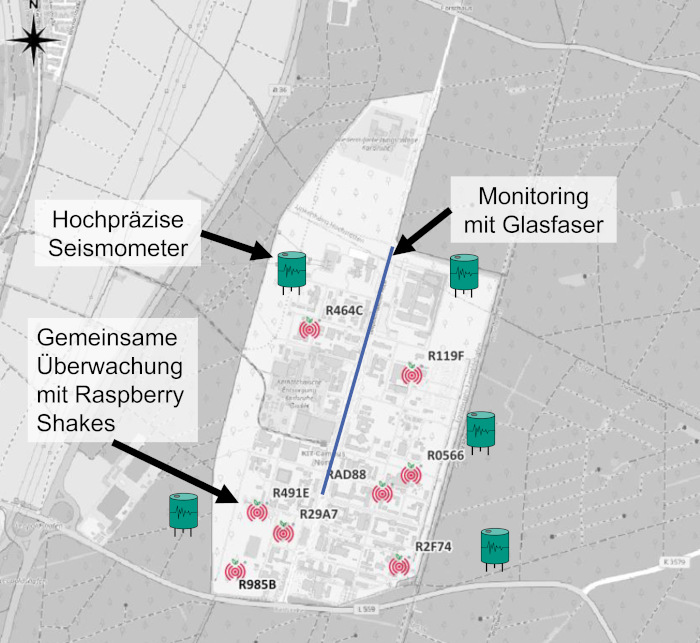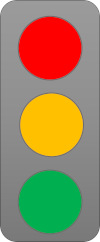Seismic monitoring
In the DeepStor project, particular importance was attached to seismic monitoring. Three types of sensors are combined for this purpose: High-precision seismometers, mobile sensors and fiber optics.
Seismic monitoring is based on recommendations and legal requirements. A local network of five highly sensitive seismometers is set up for this purpose, which permanently records and independently evaluates ground movements around the exploratory borehole.
The so-called traffic light system for evaluating seismic events was developed with particular care. It determines the vibrations for which measures must be taken - and goes beyond the usual requirements. The reason for this is the proximity to particularly sensitive buildings and research facilities on the campus.
There is a so-called traffic light system so that a quick response can be made to unusual movements. It indicates when measures need to be taken - for example, in the unlikely event that vibrations are felt or sensitive equipment in laboratories could be disturbed.
According to a German standard, vibrations of 3 millimetres per second or more are considered potentially damaging to buildings. People usually feel movements from 0.3 millimeters per second. In order to protect particularly sensitive research facilities and infrastructure on the North Campus, the DeepStor team has set an even lower limit: From as little as 0.03 millimeters per second, work is stopped as a precaution and the cause investigated.
The high-precision seismometers are combined with several plug-and-play seismometers, known as Raspberry Shakes. Some of these are already distributed in buildings on the North Campus. In future, citizens and schools in the surrounding communities will be invited to take part in the measurements with their own sensors. Here you will find an overview of data collection and an assessment of the data quality of the current test sensors. Interested Campus North institutes are invited to participate and host a seismometer.
The third type of sensor consists of fiber optic cables, which will be used to monitor DeepStor both along the borehole and within the near-surface environment as part of dedicated research studies. Within the framework of the preparatory phase, we make use of an existing fiber optic link between the two KIT campuses to advance methodologies for using operational telecommunication fiber networks for seismic measurements. This activity highlights an interdisciplinary collaboration within KIT, made possible through the use of infrastructure established as part of the Cluster of Excellence Chem4Quant – Chemical Design of Highly Precise Quantum Architectures (press release citation).
This concept ensures that the project is monitored in the best possible way - and that everyone involved is well informed.
An overview of the currently installed sensors (seismometers, Raspberry Shakes, fiber optic cables) can be found here.
Contact: Dr. Jérôme Azzola


